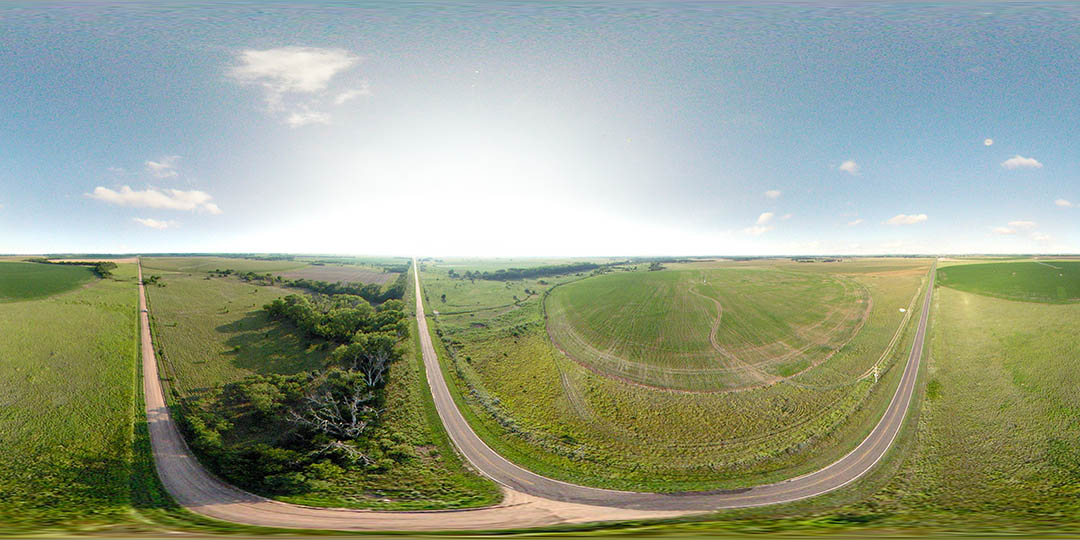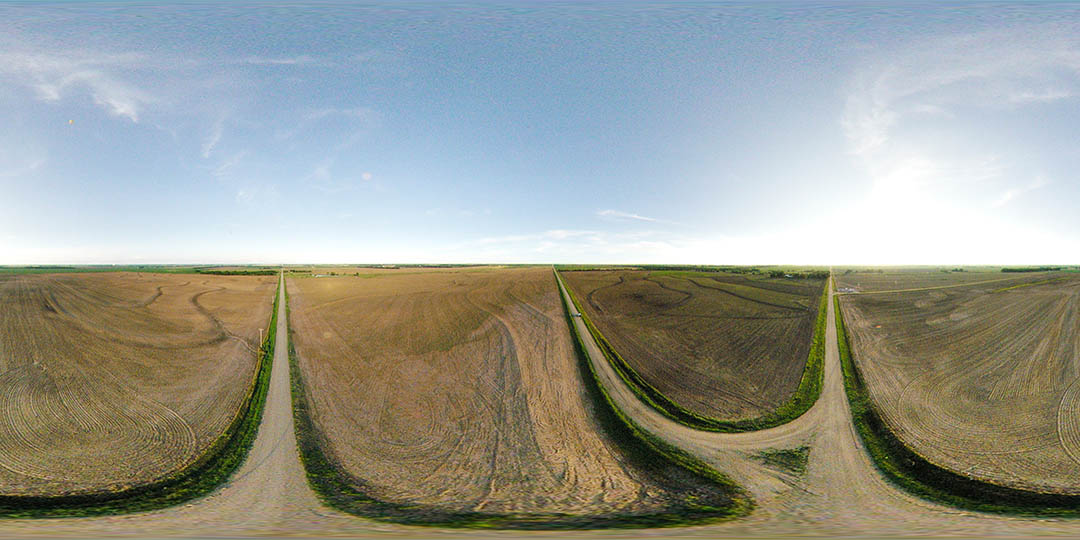Grid Corrections
 [Image: From "Grid Corrections" by Gerco de Ruijter, courtesy of the Ulrich Museum of Art].
[Image: From "Grid Corrections" by Gerco de Ruijter, courtesy of the Ulrich Museum of Art].In case this is of interest, I've got a new article up over at Travel + Leisure about photographer Gerco de Ruijter, who recently undertook an exploration of sites where the Jeffersonian road grid has to go askew in order to account for the curvature of the Earth.
 [Image: From "Grid Corrections" by Gerco de Ruijter, courtesy of the Ulrich Museum of Art].
[Image: From "Grid Corrections" by Gerco de Ruijter, courtesy of the Ulrich Museum of Art].De Ruijter is already widely known for his work documenting grids and other signs of human-induced geometry in the landscape, from Dutch tree farms to pivot irrigation systems, which gives this new focus an interestingly ironic air.
 [Image: From "Grid Corrections" by Gerco de Ruijter, courtesy of the Ulrich Museum of Art].
[Image: From "Grid Corrections" by Gerco de Ruijter, courtesy of the Ulrich Museum of Art].In other words, these are places where a vision of geometric perfection—a seemingly infinite grid, dividing equal plots of land for everyone, extending sea to shining sea—collides with the reality of a spherical planet and must undergo internal deviations.
Those are the "grid corrections" of de Ruijter's title, and they take the form of otherwise inexplicable T-intersections and zigzag turns in the middle of nowhere.
 [Image: From "Grid Corrections" by Gerco de Ruijter, courtesy of the Ulrich Museum of Art].
[Image: From "Grid Corrections" by Gerco de Ruijter, courtesy of the Ulrich Museum of Art].The project includes a series of spherical panoramas de Ruijter made using kite photography at specific corrective intersections outside Wichita, in effect distorting the distortions, a kind of topographical reverb.


 [Images: From "Grid Corrections" by Gerco de Ruijter, courtesy of the Ulrich Museum of Art].
[Images: From "Grid Corrections" by Gerco de Ruijter, courtesy of the Ulrich Museum of Art].And there is also a further sub-series of satellite images—all taken from Google Earth—stitched together to show intersections where grid corrections occur.
 [Image: "Canada/USA 2015 Grid Correction Leota Minnesota," from "Grid Corrections" by Gerco de Ruijter, courtesy of the Ulrich Museum of Art].
[Image: "Canada/USA 2015 Grid Correction Leota Minnesota," from "Grid Corrections" by Gerco de Ruijter, courtesy of the Ulrich Museum of Art].The actual article explains in more detail what these grid corrections are, why they exist in the first place, and how often they appear, including references to James Corner's Taking Measures Across the American Landscape and to a 2007 post on Alexander Trevi's blog, Pruned.
 [Image: From "Grid Corrections" by Gerco de Ruijter, courtesy of the Ulrich Museum of Art].
[Image: From "Grid Corrections" by Gerco de Ruijter, courtesy of the Ulrich Museum of Art].For more, then, not only check out the Travel + Leisure piece, but click around on de Ruijter's own website—and, if you're in The Netherlands, stop by the Van Kranendonk Gallery in The Hague tomorrow, Saturday, December 12th, to see a few examples from "Grid Corrections" on display.

Comments are moderated.
If it's not spam, it will appear here shortly!
Reminds me of Florence Lipsky's "La grille sur les collines" [1999], where the rigidity of San Francisco's street grid must deform and deflect to accommodate terrain.
Post a Comment